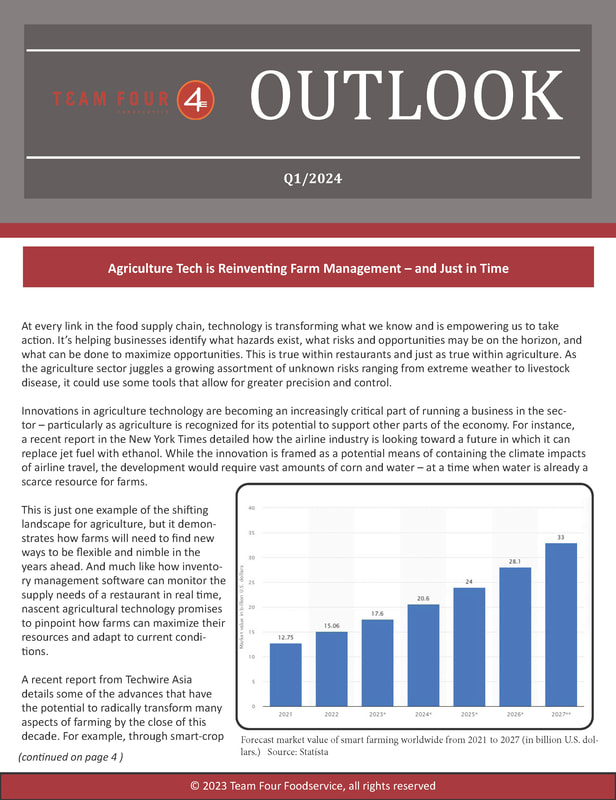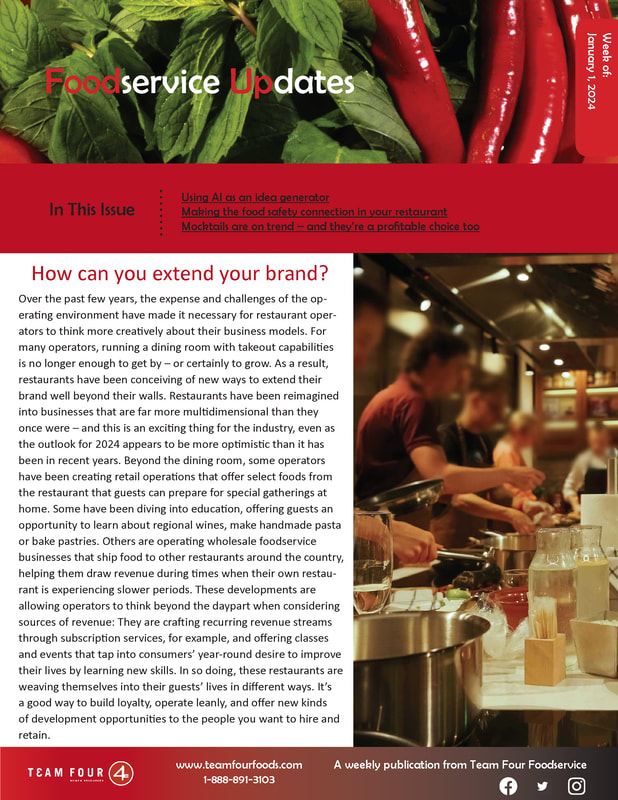 The need for value: We’ve been hearing about it for a while as we ride out hiccups in the post-pandemic economy. The Bureau of Labor Statistics’ newly released Consumer Price Index shows that inflation has increased 5 percent year over year and food-away-from-home prices are 8.8 percent higher year over year. Consumers are leaning into value and watching their retail spending amid whispers of a recession coming in the second half of the year. Concern over the bank failures in March are likely adding some pressure on consumer spending too. As a result, your efforts to infuse value through the experience you offer will continue to be important. The National Restaurant Association’s 2023 State of the Restaurant Industry report includes some tips to show guests you’re a smart-money pick. Consider fine-tuning your loyalty and reward program, which 80 percent of consumers say they would use for a nearby restaurant that they patronize. Change up your portion sizes. Nearly three-quarters of adults say they would order smaller portions for a lower price if they were offered. (Of course, offering a larger size on the menu might incentivize guests to order more for their money too.) Stabilize your restaurant’s traffic and cash flow while magnifying the value you offer. You might offer discounts to dine during off-peak hours and/or slower days of the week, or boost interest in dining at these times by offering limited-time promotions during these periods. On that note, more consumers are responding favorably to dynamic pricing on menu items too, so it may be worth experimenting with shifting prices in line with guest traffic and communicating transparently about price shifts via your app and social media. Finally, if you have a loyal following, consider offering house accounts that allow guests to pre-pay your restaurant a set amount and get a bonus amount added to their account that they can use when they dine with you. The higher the pre-payment amount, the higher the bonus. Research has found this arrangement appeals across age demographics.
0 Comments
 Does your restaurant provide a good value to guests? If it seems like the term has become the buzzword of the moment, it is only gaining momentum: The market research firm Innova Market Insights ranked value as its top trend heading into 2023, replacing sustainability, which was this year’s prevailing trend. In the midst of the high inflation we’ve been experiencing throughout the year, an Ipsos poll of more than 2,000 U.S. consumers found that more than half of respondents are forgoing or limiting impulse purchases, 47 percent are choosing less expensive brands and 33 percent are buying less. While this means many consumers are leveling down when it comes to their spending – and likely opting for more economical menu options and restaurant categories when they eat out – there is still room for higher-end meals that feel like worthwhile experiences. Indeed, a recent Restaurant Business report cites the example of Papi Steak, the Miami restaurant that serves an off-menu, 55-ounce tomahawk steak. The meal, which is accompanied by a throng of dancers and its own entrance music, is presented to guests in a bejewled briefcase and branded at the table with the restaurant’s logo. The cost: $1,000. Granted, most restaurants can’t go to these extremes to provide a memorable experience that guests can share with friends – or with the world on social media. But in every restaurant category right now, operators need to define clearly what providing value means to their guests. A fine-dining restaurant may need to create their own version of the Papi Steak experience. A quick-service brand where guests expect deals may face some extra pressure to make elevated prices feel more worthwhile to consumers than preparing food at home. A recent Restaurant Dive report likened restaurants’ management of prices to a tightrope walk – operators must charge prices high enough to protect the bottom line without turning guests off and potentially losing traffic to competitors or even grocers. Consumers are showing resilience so far when it comes to spending. Still, according to Paul Westra, managing director of restaurant investment research for Capital One, input cost inflation has been surpassing menu pricing. So while average menu increases have hovered around 6 percent in the past 18 months, they would need to rise to 11 percent to protect profits. The math seems to be working out at McDonald’s, for one, which reported a 6 percent sales increase in their latest earnings report despite year-over-year menu price increases of 10 percent. Restaurant operators may even get some financial relief if inflation levels off further. Still, knowing where your guests draw a line in the sand on cost – and at what point the experience you provide no longer feels worthwhile – will continue to be important to determining how you can provide value. |
More Marketing ArticlesFinding the line on guest spendingGet your message outSocial mediaCategories
All
Archives |
Foodservice CEO is provided for informational purposes only. It is intended to offer foodservice operators’ guidance regarding best practices in running their operations. Adherence to any recommendations included in this Guidance will not ensure a successful operation in every situation. Furthermore, the recommendations contained in this website should not be interpreted as setting a standard of operation or be deemed inclusive of all methods of operating nor exclusive of other methods of operating.
Copyright 2023 Team Four Foodservice, All Rights Reserved.




 RSS Feed
RSS Feed